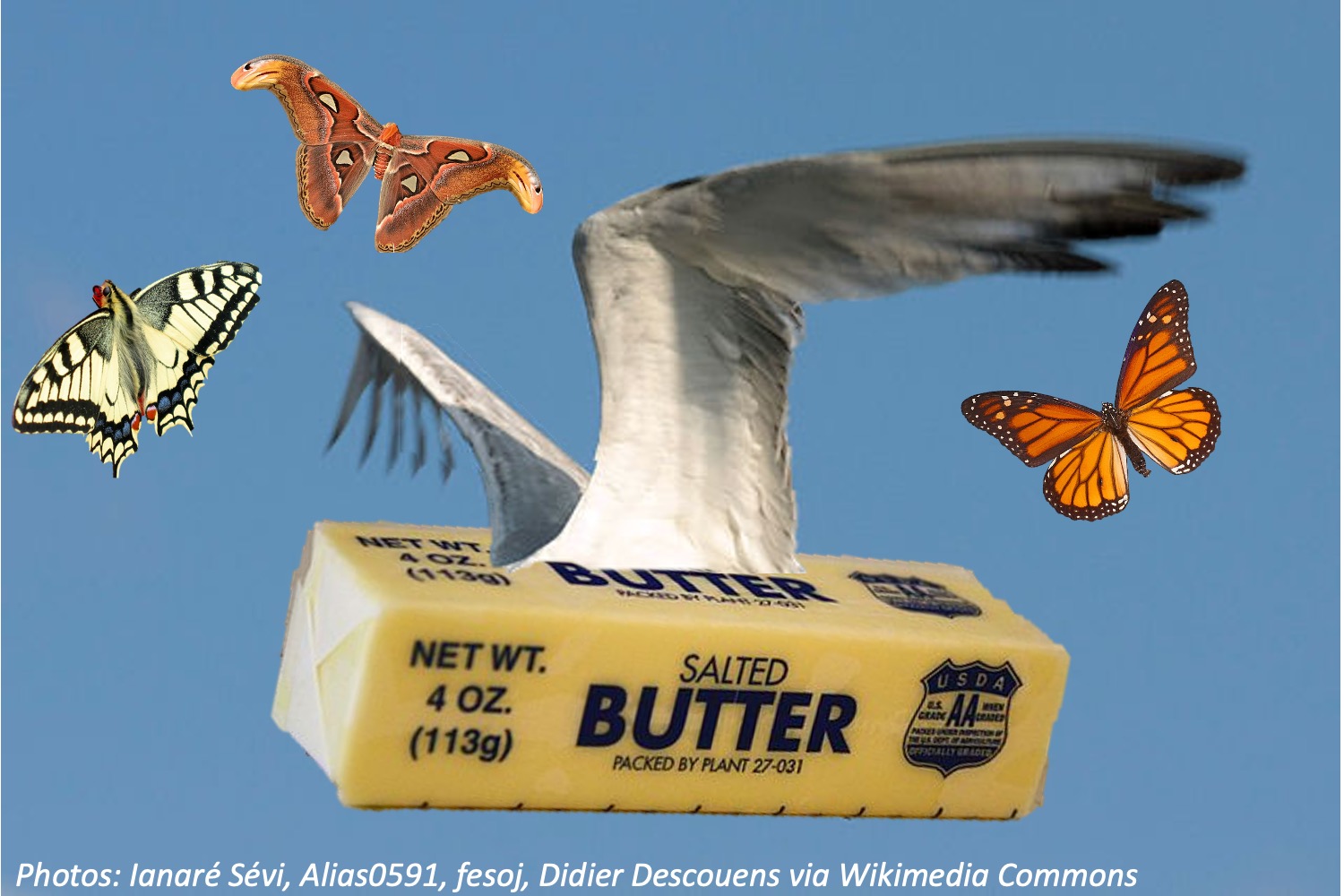What’s the difference between butterflies and moths, anyway? Butterflies have thin antennae with a club-like ball on the end, while moth antennae are straight and feathery. Butterflies have thinner, smoother bodies, while moths’ bodies are chubby and hairy. Moths are awake at night (“nocturnal”), so they have compound eyes that catch light from many angles to help see in the dark. So moths can probably spot the difference more easily than us people can, too!
Wee ones: Some butterflies have bright orange on their wings. Can you find 2 orange things in your room?
Little kids: If your bug feeder brings in 3 butterflies during the day and 7 moths at night, how many bugs do you feed in total? Bonus: If a butterfly has 4 cool blue spots on each forewing and 2 blue spots on each smaller hindwing, how many spots does it have?
Big kids: Moths rest with their wings flat and open, while butterflies close them pointing up. If in a field of 50 bugs you see 14 bugs with open wings and the rest closed, how many butterflies are there? Bonus: Butterflies lay about 100 eggs at a time! If every one of those butterflies in the field laid eggs, how many eggs would there be?
Answers:
Wee ones: Items might include socks, shirts, toys, or crayons.
Little kids: 10 bugs. Bonus: 12 blue spots, since it has 6 (4+2) on the left, and 6 on the right.
Big kids: 36 butterflies. Bonus: 3,600 eggs.



